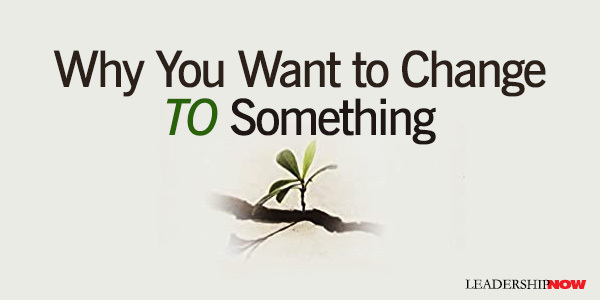 |
 |
09.09.15

Why You Want to Change TO Something
WHEN we encounter something that needs changing we tend to view it as a “freedom from” problem. In other words, what can I do to get rid of the obstacles or constraints that are impeding progress? When thinking about change we should look at “freedom to” solutions. Both approaches lead to freedom but “freedom from” is a negative freedom and can lead to new problems. It’s like replacing a negative with nothing. "Freedom to" is a positive freedom. Michael Fullan writes in Freedom to Change that most people think that is all their obstacles to change were removed they’d be better off. But evidence suggests that you would have new and more difficult challenges to face like anxiety, isolation, and doubt. “Freedom From” does not consider the changes that liberation requires for success. For instance, what do I do with my new found freedoms?Fullan says that goal is not to be free and alone but to be free with others. It is the difference between being reactive and proactive. To do that he suggests four factors for maximizing freedom to change that integrate and manage the tensions inherent in individual and group dynamics: Autonomy and Cooperation: “Being our own person and being connected,” says Fullan, “is the core tension and challenge of living meaningfully.” We need both autonomy and cooperation. It’s not a choice. Organizations can give more autonomy in exchange for commitments to cooperate. Feedback: Between acceptance of others and learning choose learning. “Within strong collaborative cultures, an enormous amount of feedback occurs naturally through daily focused interactions.” Feedback can be a powerful tool for positive “freedom to” change if seen properly. Fullan advises us to be a learner under all circumstances. Accountability: External accountability schemes do not work because they tell us that the system is not performing, but not how to fix the situation. Dislodging top-down accountability is extremely difficult but by building widespread internal accountability, it actually furthers the organizational goals. “The more internal accountability thrives, the greater the responsiveness to external requirements, and the less the external body has to do—there’s less need to resort to carrots and sticks to incite the system to act responsibly.” In the “freedom to” world, you need to connect with others—especially peers. “It is in your own self-interest to promote a greater accountability with those around you.” Diffusion (by interacting more widely): Lead from the middle. “Work with peers to strengthen the middle, get more done, and become better partners upwards and downwards.” Loosen up hierarchical structure so that they are more amenable to individual and small-group initiative. Developing the “freedom to” capacity to take advantage of the new possibilities will be the hardest art. It’s always comparatively easier to get rid of old shackles than it is to take advantage of new freedoms.” Fullan writes, “Genuine independence can only be achieved by the connected individual.” 
Posted by Michael McKinney at 10:59 PM
|
BUILD YOUR KNOWLEDGE
 

How to Do Your Start-Up Right STRAIGHT TALK FOR START-UPS 
Grow Your Leadership Skills NEW AND UPCOMING LEADERSHIP BOOKS 
Leadership Minute BITE-SIZE CONCEPTS YOU CAN CHEW ON 
Classic Leadership Books BOOKS TO READ BEFORE YOU LEAD |